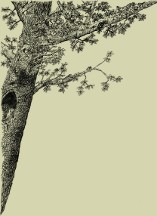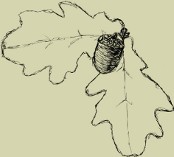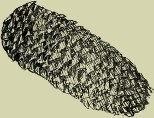42 41 40 39 38 37 36 35 34 33 32 31 30 29 28 27 26 25 24 23 22 21 20 19 18 17 16 15 14 13 12 11 10 9 8 7 6 5 4 3 2 1
Zeszyt 20 (1989)
The main purpose of impregnating wood with plastics is not to enhance its mechanical properties in general, but first of all to stabilize it against atmospheric and biological attack, depending on moisture absorption. Hydrophobic silicon derivatives can by bound to cellulosic materials by radiation curing. Methacrylester of bimethoxy-propyloxy-silane can be impregnated and polymerized by gamma radiation in different wood species as beech, ash, oak and fir. Water composite material is far from to be water-repellent.
The resistance of Scots pine wood (Pinus sylvestris L.) impregnated with polystyrene to attack by white, brown and soft rot fungi, by insects (Hylotrupes bajulus L.) and by marine organisms was investigated in laboratory and in field test.
The tests showed that the impregnation of wood with polystyrene increases its resistance to biological attack, chiefly to whiterot fungi. The resistance against “soft rot” fungi and marine bores is lower.
Professor Jan Wiertelak was one of the pioneers of Polish science in chemistry and chemical technology of wood who enjoyed high opinion both in the country and abroad. He was born on January 1 1900 in the village of Łąkociny near Ostrów Wielkopolski. In 1924 he graduated from the University of Poznań in the field of Organic Chemistry. Then he began to work as an assistant in the Department of General Chemistry of the Faculty of Forestry and Agriculture of the Poznań University. In 1926 he received his Ph. D. for the dissertation “Electroosmosis on silica gels” written under Professor S. Glixelli. In 1928 Jan Wiertelak got acquainted with the work of the Institut du Pin in Bordeaux and with the forest industry in South France. Later he hot a two year fellowship in the Forest Products Laboratory, Madison, Wisonsin, USA, where, under direction of Professor L.F. Hawley he was carrying out investigations on changes of chemical composition of wood in the processes of heat treatment, hydrolysis and decay by fungi.
Since 1931 Jan Wiertelak was carrying out research work in the Department of General Chemistry of the Faculty of Forestry and Agriculture at the University of Poznań, in its Section of Chemistry and Chemical Technology of Wood which he organized himself. In 1933 he traveled to England to Princes Risborough, Bucks, where, together with W.H. Campbell he carried out work on decay of wood by fungus from Ascomycetes group. In 1935 at the Chemical Faculty of the Institute of Technology in Warsaw he was qualified for assistant-professorship in the field of wood technology.
Scientific achievements of Jan Wiertelak during the years 1931-1939 were investigations into adsorption of organic liquids by cellulose products, influence of drying of wood with various moisture content on its chemical composition, effect of time and temperature on the results of lignin determination. During the World War II Jan Wiertelak was killed as an officer of Polish Forces.
The list of publications and reports by Jan Wiertelak comprising 48 items is given in the paper.
In order to investigate the properties of phenol resin Fenolit-43 the spectra of specimens in acetylated form were made with NMR method. On the base of NMR spectra chemical structure of the resin was characterized and following properties were determined: number of methylol groups, degree of polymerization, molar ratio of formaldehyde to phenol and number of non-substituted hydrogen atoms in phenol rings of resin.
Investigation results revealed that Fenolit-43 resin shows low degree of substitution of phenol rings and excessively low content of methylol groups.
Results of the investigation son the influence of four chemical compounds — K2Cr2O7, KF⋅HF, ZnSiF6⋅6H2O, H2BO3 and four preservatives — Biotox R-12, Improsol, preparation F-8, preparation SF on the compression strength along the grain, of treated wood, are presented in this paper. Treated wood was seasoned during period of time 1, 6 and 12 weeks. It was ascertained, that potassium dichromate and Biotox R-12 increased the compression strength of wood, however Improsol reducted the compression strength of wood.
Two variants of submerged cultures of Armillariella mellea (Wahl ex Fr.) P. Karsten fungus: I — variant with the addition 2% of bean husks to the culture medium, and II — variant with the addition 2^ of peas husks were performed. In this way two different post-culture fluids were obtained.
At the same time, from superficial cultures of Pleurotus ostreatus (Fr. ex Jacquin) fungus four post-culture fluids were obtained from the following substrates by means of extraction: I — beech bark + rye straw, II — pine bark + rye straw, III — pine sawdust + rye straw, and IV — straw. In all fluids complexes of cellulolytic and hemicellulolytic enzymes were determined in relation to model substrates such as carboxy-methylcellulose-Na, Whatman's filtration paper No. 1, D-cellobiose and natural substrates such as hemicelluloses extracted from bean and pea husks.
All post-culture fluids exhibited activities of celluloses and hemicellulasees, but most active ones were obtained form the I variant of A. mellea fungus and post-culture substrate of P. ostreatus fungus and II substrate: pine bark + rye straw.
The paper presents the system of microcomputer aided planning of the cutting of chipboards into particular forms. The system consists of a software package permitting an improved effectivity of the utilization of materials in a furniture industry enterprise. The system is regarded as a segment of a strategy of the “just in time” production and its elements of information and decision making referring to the management of the enterprise. A verification has been carried out on the example of a shelving system Billy.
Hydrolysis of β-glycosidic bonds, thermoxidation and dehydration are reactions which take place during the heating of cellulose (at 100 to 270°C) prior to its depolymerization into glycosans. The hydrolytic effect proceeds statistically (random along the chain) resulting into the formation of a new reducing group which can react with oxygen to form peroxide radicals and hydroperoxides. Hydrolysis and thermoxidation are catalysed by many inorganic compounds which are often present in original and especially in treated cellulosic materials. The formation of glycosans is depressed by the same additives. The course of investigated reactions is important to know from the point of view of thermal stability and flammability of cellulosics as well as from the aspect of production of some pyrolytic products (levoglucosan, levoglucosenon, furan derivatives, etc.).















 Pobierz PDF
Pobierz PDF